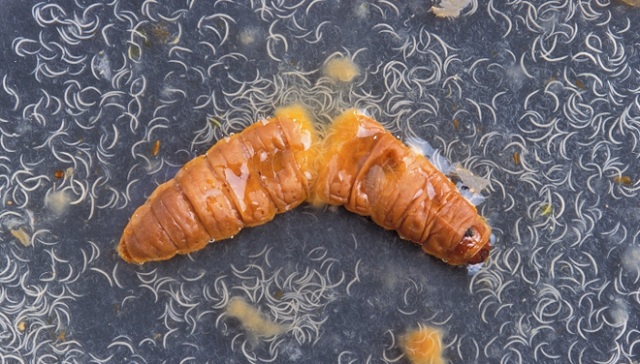Here’s the problem: If you are a parasite and the animal you are parasitizing gets eaten then you get eaten too. This worm has a solution. It changes the color of its caterpillar host and makes it undesirable to would be predators, like robins. Normally a pale color, this caterpillar will turn pink-red. Find out more about this special little trick here.
Previously, not much has been found about parasites manipulating their hosts to avoid predation. In fact, the opposite has been seen-using chemical mind control to alter the host animal’s behavior to increase the likelihood of it being eaten so that the parasite might move on to the next stage of its life cycle. Or my personal favorite, the worms that live inside grasshoppers and then, once again using molecular mimicry and chemical mind control, compel them to leap to their watery death so that the parasite can live out the remainder of its life free swimming in a stream or river.




